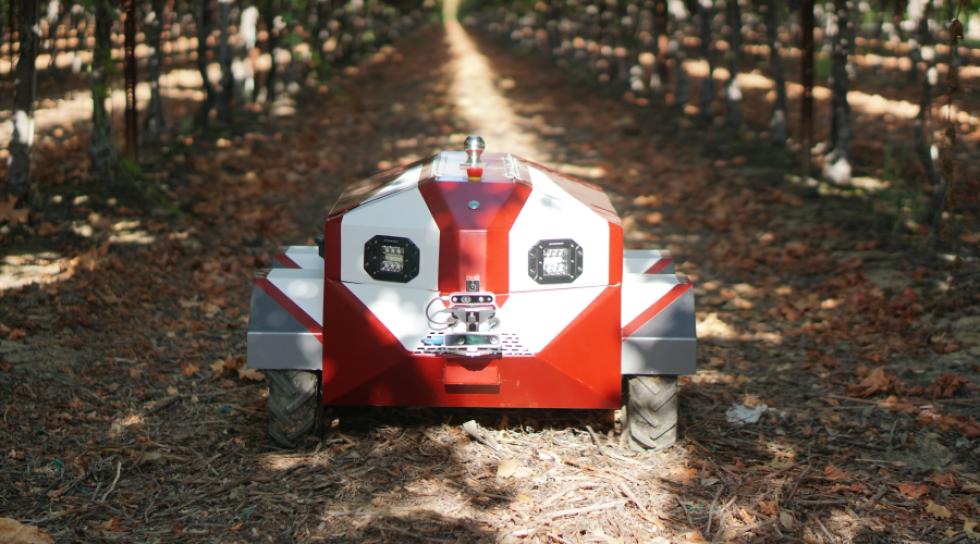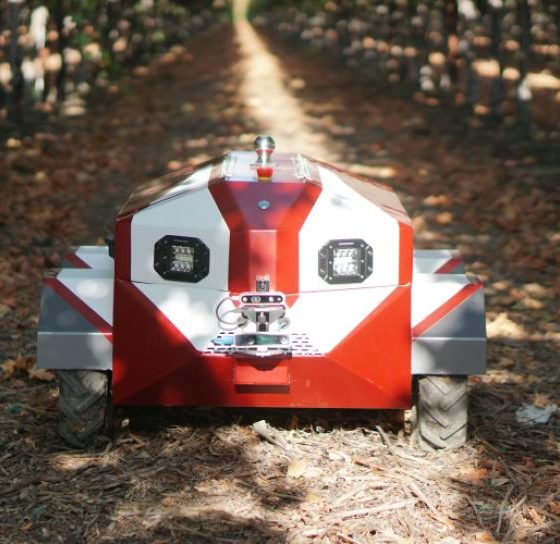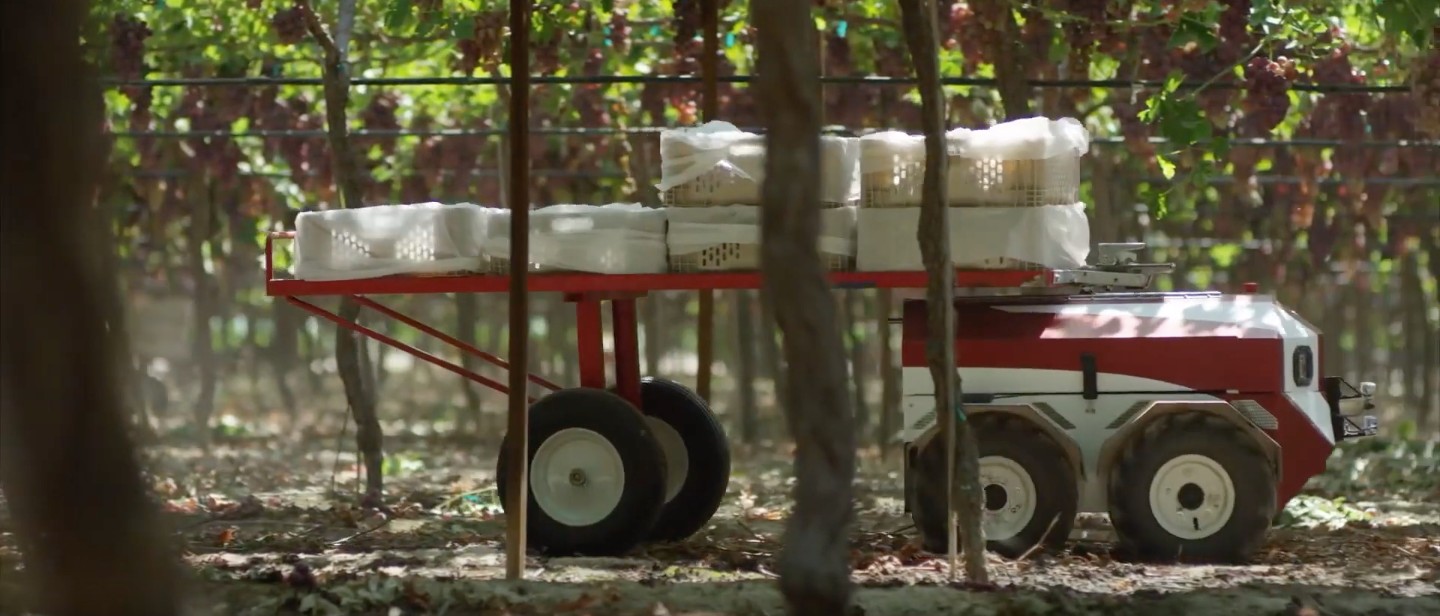

Lifestyle
Hitch’s autonomous Farming Robot is the answer to the declining agricultural industry
The farming industry was critical in the success and growth of our nation and today is still a keystone part of the American economy. Since the founding of the United States in 1776, farming has been considered a dominant force in providing American citizens with employment and food. According to the U.S. Bureau of Labor Statistics, almost half of the American population was employed in agriculture. However, this number has sharply declined.
The Agricultural industry employed less than 1% of the American workforce in 2018. With the U.S. population steadily increasing, the agriculture sector is in need of more laborers and workers to keep up with the demand for food and harvesting of other necessities.
One of the most booming sub-industries in the agricultural field is cannabis and hemp. Cannabis-based products have become a hot commodity because of their wide array of uses. Everything from industrial-strength hemp rope to Cannabidiol (CBD) products have taken over as some of the most popular items to buy.
CBD has boomed since its initial introduction into the medical industry in 2018 after its legalization due to the passing of the U.S. Farm Bill that allowed the product to be used medically and recreationally. CBD products are used by the world’s biggest athletes, and also by regular citizens who suffer from common medical issues like anxiety and depression. Forbes suggests that the CBD industry could be worth $20 billion by 2024.

California-based Hitch Robotics is one of the companies aiming to assist the industry with its lack of workers. The company has developed a fully-autonomous and solar-powered farming robot that is geared toward assisting in the harvesting of large fields of cannabis. With the development of autonomous machines like Hitch’s farming robot that can work around the clock without human interference, the workforce may not need to grow.
Hitch notes that the continuing decline in the agricultural workforce has cost the U.S. economy $3.1 billion annually in the production of crops. With Hitch, farms can see a 30% increase in labor productivity, which could save California, the state with the biggest Ag industry, around $1.7 billion.
Hitch’s fully-autonomous product will assist in the harvesting of crops and plants through a fully-computerized method of navigation. The robot will use Artificial Intelligence, High Precision GPS systems, various cameras and sensors to navigate through any crop field it is meant to be utilized for.
The robot also has three different “hitches” to assist with different tasks: The Transport Hitch, the Harvest Hitch, and the Command Hitch. The Transport Hitch can be used for transporting crops and plants to other locations. The Harvest Hitch is pulled by a series of autonomous vehicles and will accurately identify and then pick and pack ripe produce or crops, place them in a bin and transport them to the appropriate location. The Command Hitch allows a series of autonomous vehicles to be operated through a solar-powered trailer with automated battery swaps.
The versatility of the Hitch Farming Robot could revolutionize the modern agricultural industry as we know it. The company has raised $386,600 of its $2,000,000 goal for the current investment round and is backed by a global early-stage venture fund, focused on Deep Tech and enterprise solutions. Hitch has requested the help of Teslarati to secure the rest of the needed funding to continue the development of its product.
For as little as $1,000 today, you can become a shareholder revolutionizing and invigorating the agricultural industry.

Lifestyle
Tesla Model S Plaid battles China’s 1500 hp monster Nurburgring monster, with surprising results
There is just something about Tesla’s tuning and refinement that makes raw specs seem not as game-changing.

The Tesla Model S Plaid has been around for some time. Today, it is no longer the world’s quickest four-door electric sedan, nor is it the most powerful. As per a recent video from motoring YouTube channel Carwow, however, it seems like the Model S Plaid is still more than a match for some of its newer and more powerful rivals.
The monster from China
The Xiaomi SU7 Ultra is nothing short of a monster. Just like the Model S Plaid, it features three motors. It also has 1,548 hp and 1,770 Nm of torque. It’s All Wheel Drive and weighs a hefty 2,360 kg. The vehicle, which costs just about the equivalent of £55,000, has been recorded setting an insane 7:04.957 at the Nurburgring, surpassing the previous record held by the Porsche Taycan Turbo GT.
For all intents and purposes, the Model S Plaid looked outgunned in Carwow’s test. The Model S Plaid is no slouch with its three motors that produce 1,020 hp and 1,420 Nm of torque. It’s also a bit lighter at 2,190 kg despite its larger size. However, as the Carwow host pointed out, the Model S Plaid holds a 7:25.231 record in the Nurburgring. Compared to the Xiaomi SU7 Ultra’s record, the Model S Plaid’s lap time is notably slower.
Real-world tests
As could be seen in Carwow’s drag races, however, Tesla’s tech wizardry with the Model S Plaid is still hard to beat. The two vehicles competed in nine races, and the older Model S Plaid actually beat its newer, more powerful counterpart from China several times. At one point in the race, the Xiaomi SU7 Ultra hit its power limit due to its battery’s temperature, but the Model S Plaid was still going strong.
The Model S Plaid was first teased five years ago, in September 2020 during Tesla’s Battery Day. Since then, cars like the Lucid Air Sapphire and the Xiaomi SU7 Ultra have been released, surpassing its specs. But just like the Model Y ended up being the better all-rounder compared to the BYD Sealion 7 and the MG IM6, there is just something about Tesla’s tuning and refinement that makes raw specs seem not as game-changing.
Check out Carwow’s Model S Plaid vs Xiaomi SU7 drag race video below.
Lifestyle
500-mile test proves why Tesla Model Y still humiliates rivals in Europe
On paper, the BYD Sealion 7 and MG IM6 promised standout capabilities against the Model Y.

BYD is seeing a lot of momentum in Europe, so much so that mainstream media has taken every opportunity to argue that the Chinese automaker has beaten Tesla in the region. But while BYD sales this year in Europe are rising and Tesla’s registrations remain challenged, the raw capabilities of vehicles like the Model Y are difficult to deny.
This was highlighted in a 500-mile challenge by What Car? magazine, which showed that the new Tesla Model Y is more efficient, cheaper to run, and more reliable than rivals like the BYD Sealion 7, and even the nearly 400 KW-charging MG IM6.
Range and charging promises
On paper, the BYD Sealion 7 and MG IM6 promised standout capabilities against the Model Y. The Sealion 7 had more estimated range and the IM6 promised significantly faster charging. When faced with real-world conditions, however, it was still the Model Y that proved superior.
During the 500-mile test, the BYD nearly failed to reach a charging stop, arriving with less range than its display projected, as noted in a CarUp report. MG fared better, but its charging speeds never reached its promised nearly-400 kW charging speed. Tesla’s Model Y, by comparison, managed energy calculations precisely and arrived at each stop without issue.
Tesla leads in areas that matter
Charging times from 25% to 80% showed that the MG was the fastest at 17 minutes, while Tesla and BYD were close at 28 and 29 minutes, respectively. Overall efficiency and cost told a different story, however. The Model Y consumed 19.4 kWh per 100 km, compared to 22.2 for MG and 23.9 for BYD. Over the full trip, Tesla’s charging costs totaled just £82 thanks to its supercharger network, far below BYD’s £130 and MG’s £119.
What Car? Magazine’s testers concluded that despite BYD’s rapid sales growth and the MG IM6’s seriously impressive charging speeds, Tesla remains the more compelling real-world choice. The Model Y just offers stability, efficiency, and a proven charging infrastructure through its Supercharging network. And as per the magazine’s hosts, the Model Y is even the cheapest car to own among the three that were tested.
Watch What Car? Magazine’s 500-mile test in the video below.
Lifestyle
Tesla Cybertruck slapped with world’s least intimidating ticket, and it’s pure cringe
One cannot help but cringe and feel second-hand embarrassment at the idea of a person just driving around with a stack of these babies.

A Cybertruck parked at Stanford Shopping Center in California was recently hit with what might be the most try-hard piece of paper ever slipped under a wiper blade: a “fake citation” accusing the driver of supporting a “fascist car.”
The note, shared on X by Tesla staff program manager Ryan Torres, quickly made the rounds on X, where it quickly gained attention as an example of how not to protest.
The world’s least intimidating ticket
According to the citation, the supposed “violation” was “driving a fascist car.” The remedial action? Take the bus, call an Uber, or ride a bike. The note also dubbed Elon Musk a “chainsaw-wielding Nazi billionaire.” Now, protests against Tesla and Elon Musk have become commonplace this year, but one cannot help but cringe and feel second-hand embarrassment at the idea of a person just driving around with a stack of fake anti-Tesla/Musk citations.
Torres pointed out the irony himself in his post on X. Tesla currently employs over 140,000 Americans, and SpaceX has put the U.S. firmly back at the top of space technology. As Torres put it, maybe the person behind the world’s least intimidating ticket should “read a book on innovation before vandalizing” other people’s property.
Peak performative clownery
Not to mention that the fake ticket’s logic collapses under its own weight. EVs like the Cybertruck are literally designed to reduce emissions, not “destroy the economy.” If anything, Tesla has bolstered the United States’ economy by fueling jobs in engineering, manufacturing, and clean energy. It’s not the first time a Tesla has been the target of vandalism or politically charged notes, but this one stands out for sheer cringe value.
Torres summed it up neatly: “Peak clownery.” On that point, at least, the citation earns full marks. In a way, though, perhaps cringe fake tickets are not as bad as the literal firebombs that were being thrown at Tesla stores and cars earlier this year because some critics were gleefully misinformed about Elon Musk.








